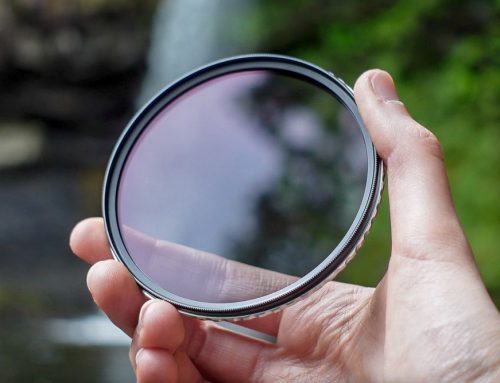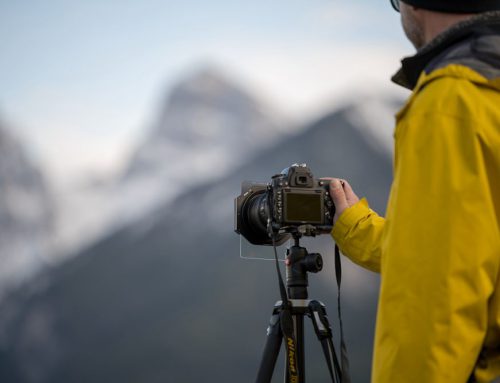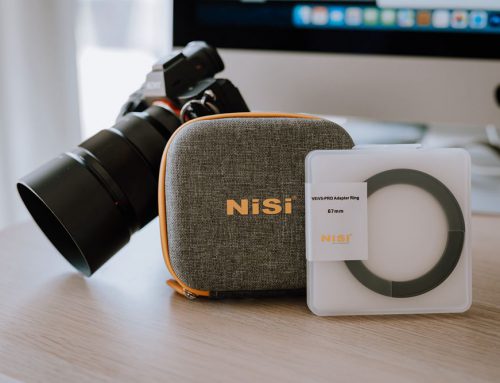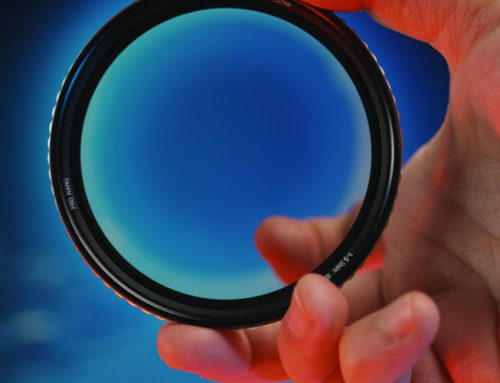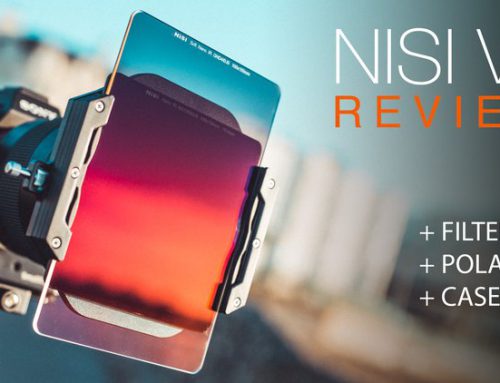Author : JOSÉ RAMOS
Many years ago I used a camera I was in love with. It was called Konica Minolta A2, and I’m sure some people still remember it with fond memories. It was a revolutionary camera at the time, and it actually made me think I would never need another camera in the future. Well, that was obviously a naive thought, as I soon found out I wanted to go wider than its 28-200mm lens in many circumstances. Many landscape shooters become quickly addicted to ultra-wide angles lenses, and I’m one of them, as the one thing that inspires me the most while shooting landscapes is to be able to capture something that resembles the vastness that the human eye can see, and this is only possible with wide angle lenses.
Besides using a ultra-wide angle lens, I also quickly became addicted to using Neutral Density (ND) Filters on the field. When I’m shooting, I need to see an accurate in-camera preview of how the final image will look like, and this is only made possible by creating single exposures of high dynamic range scenes, through selective control of light with ND Filters. Being able to use the amazing live view of my Sony camera, which can show me accurate previews in real time even with the darkest full ND filters (including the 10 stops) in front of the lens, transforms the act of shooting into a much more intuitive and rewarding process, when compared with having to make different exposures and then do exposure blending in Photoshop, having to guess on the field how the image will look like in the end.
Other two aspects of shooting which are very important to me are “ergonomics” and weight. I want each hike and photo session to be a pleasant moment, rather than a back torture exercise, so I try to carry the minimum amount of gear on my backpack Besides that, I want my gear to work as an almost natural extension of me, allowing to work with the gear and not against the gear. Regarding filters this is why, from the different sizes of ND Filters available, I tend to avoid the extremely large 150mm wide filters, and go for the 100mm ND filters, as these are lighter, less intrusive, easier to remove and position, less prone to breakage and easier to clean.
Fortunately many wide angle lenses offer 100mm compatibility, unless you want to venture into ultra-uber-wide angle realms! I used a Sigma 10-20mm lens for many years, and then switched to a full frame setup with the Zeiss 16-35mm f4 lens. Both lenses had the same widest focal length but, as I said above, ultra wide angle shooting can become an addiction, and very often I would find myself willing to go even wider, to achieve greater composition freedom in specific places. That was when the quest for an even wider rectilinear lens began, but every hour spent researching quickly turned into the sad acknowledgement that it was impossible to use 100mm filters with lenses wider than 16mm, as virtually all of them have a convex front glass element, with the need for special adapters and huge 150mm wide filters. The only exception I found was using the Sony 10-18mm APS-C lens in full frame mode on the Sony a7R, at 13mm. This APS-C lens wasn’t meant to be used in full frame mode, but it looks like it can cover the whole full frame sensor at 13mm, with acceptable vignetting. I bought this lens and used it a few times, mostly in Iceland last year, and I actually liked it a lot. Center sharpness was awesome, but the corners suffered a lot. Besides that, vignetting was occasionally a problem, and the lens would often move from its 13mm position to a different focal length, while adjusting filters, and I often found myself shooting at the wrong focal length, with unacceptably high levels of vignetting. Even though the experience wasn’t perfect, being able to go this wide opened up a new windows of composition opportunities, resulting in photos that would have never been possible at less wide settings.
“THE UNEXPECTED” – IMAGE MADE IN ICELAND, WITH THE SONY 10-18MM LENS AT 13MM, IN FULL FRAME MODE (SONY A7R CAMERA)
That was until all of a sudden a Kickstarter project announced an exquisite lens, called Venus Laowa 12mm f2.8. The Kickstarter page not only announced a ultra wide angle lens with an incredible maximum aperture, but it also announced it would be compatible with 100mm filters, through a special holder. It didn’t take long until I decided I had to buy this lens and, if everything went well, I would finally be a very happy user of the 12mm + 100mm filters combo!
I bought the lens through Kickstarter and, soon after the crowdfunding project ended, I finally received the lens. The online reviews of the lens looked promising, but but I still had no filter holder, because it was under development. I contacted Laowa about this and they agreed to send me one of their prototype holders for testing purposes. It was a cumbersome and heavy piece of metal, that could only be placed in horizontal position, with something much worse than vignetting, namely showing the corners of the holder in the image frame, and showing the foam gaskets of the full ND filters in the frame too! I can only say that I missed my Nisi V5 filter holder + Zeiss 16-35mm setup during those days… With some cropping at the sides I was still able to create some interesting landscape images, like the one below, but shooting with 100mm filters had become something very distant from what Laowa had promised its users.
I gave thorough feedback to Venus about this, and they seemed quite receptive to my suggestions, even though they also admitted they were struggling with the holder development. At the same time, as a Nisi Ambassador, I directly contacted Nisi and told them that perhaps they should start thinking about developing their own holder for the Laowa 12mm. After a long wait, I finally received the final holder from Laowa and thought that they had corrected all the issues, so that from now on I would have a perfectly useful holder. As you can guess, that didn’t happen… The holder was quite similar to the prototype, but this one at least allowed me to easily put the holder in vertical position, which was a bonus. Unfortunately, after I inserted one of my full NDs in the holder, I just couldn’t believe my eyes when I saw that the foam gasket was still fully visible on the image! The Laowa holder also included two yet-to-be-glued foam gaskets inside the holder kit, which were meant to be glued to the holder base, showing that this holder was possibly designed to be used with filters with no foam gaskets, probably to avoid the foam being visible in the frame. Unfortunately this was a problem, as most manufacturers put the foam gaskets in their filters, not on the holder, and I wanted to continue using the regular Nisi holder with other lenses, which needs foam gaskets on the filters to avoid light leaks. To further complicate things, with the Laowa holder the holder corners were slightly visible on the image, even with no filters slotted in, and if the holder was just slightly rotated, the holder would be even more noticeable on the image.
With great disappointment, I realized I couldn’t use this holder, and the dream of using 100mm filters with an ultra wide angle became a bit more distant. Until finally Nisi came to the rescue…
A few days after receiving the final holder I received the info that another Nisi Ambassador had sent a Laowa lens to Nisi, so that their engineers could try to develop a 100mm filter holder, and it looks like they were able to do it in record time! After finishing development, Nisi promised it worked perfectly, much better than the original holder, and would be fully compatible with their circular polariser and two 100mm filters! I thought this would be physicially impossible, because the polariser mount in the Laowa holder is probably the biggest culprit for excessive thickness and image problems, but I fully believed in Nisi’s word. Since the brand had already created very interesting innovations in the past, I made sure I would receive a Nisi holder for the Laowa as soon as possible, and it just arrived two days ago!
COMPARISON OF THE FRONT SIDE OF THE NISI HOLDER VERSUS THE LAOWA HOLDER, FOR THE VENUS LAOWA 12MM LENS
COMPARISON OF THE REAR SIDE OF THE NISI HOLDER VERSUS THE LAOWA HOLDER, FOR THE VENUS LAOWA 12MM LENS
LAOWA 12MM LENS WITH THE LAOWA ORIGINAL HOLDER AND THE 10 STOPS NISI FULL ND FILTER, WITH THE FOAM GASKET ON THE OPPOSITE SIDE, SO THAT THE FILTER CAN BE SLOTTED IN THE HOLDER
I know I have already written a lot, but from now on I think an image is worth a thousand words. You can see some photo examples showing different setups. The photos were made in sequence, and no RAW processing was applied. White balance was set to “Cloudy”.
As you can see the bottom line is that the Nisi Holder for the Laowa 12mm is absolutely incredible, allowing the use of ND filters with foam gasket and avoiding excessive vignetting in long exposures.
Quite curiously, the Nisi holder isn’t that thinner than the Laowa holder, so there must be some kind of magic in its build, because there’s a huge difference between the holders. I’m very impressed with how fast they have developed such a flawless product, and I’m very thankful for that.
Right now, the Nisi Holder for the Laowa 12mm f2.8 will be sold as a kit, which included the ring adapter, the holder (similar to the new V5-pro holder) with two slots, and their awesome circular polariser!
José Ramos ©





















